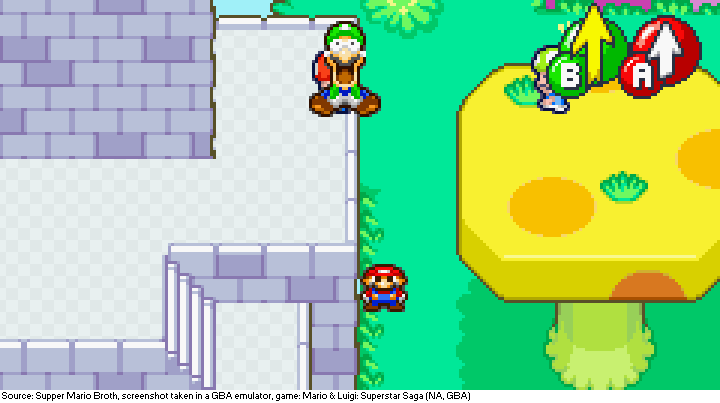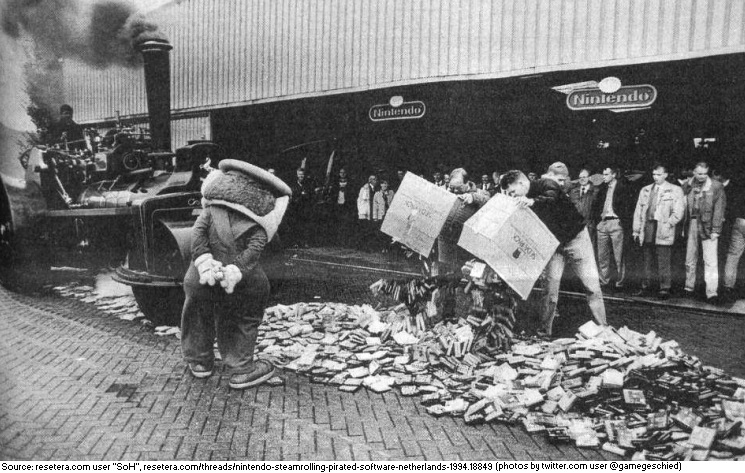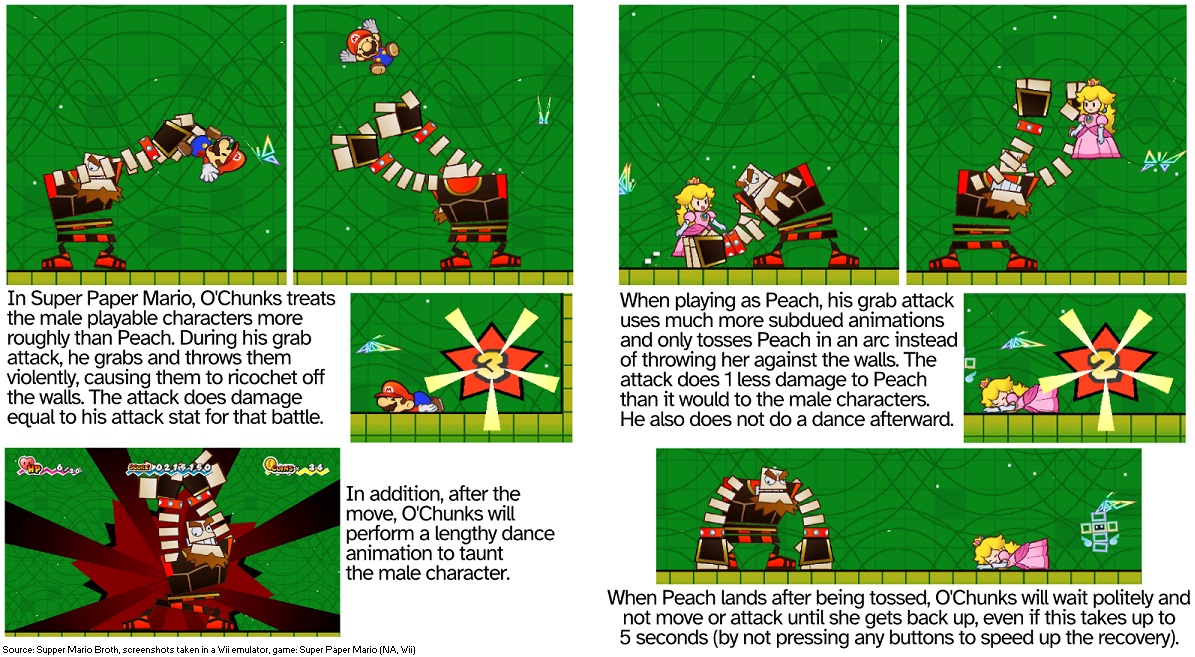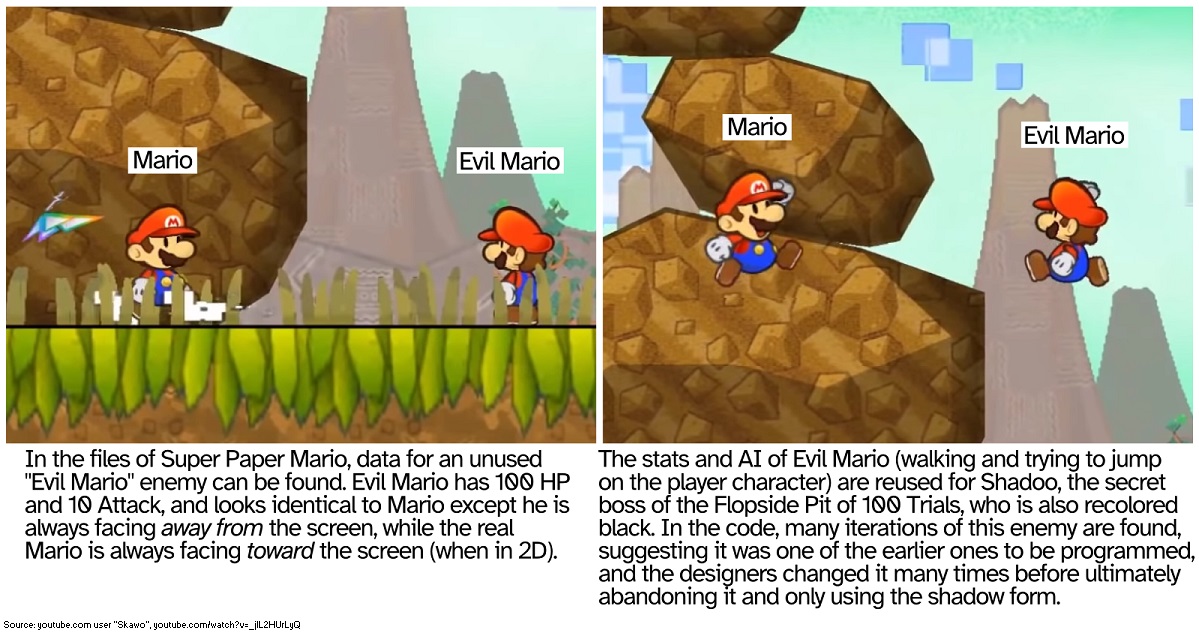1776
1777
1778
1779
In Super Mario Galaxy 2, by performing a Spin while riding Yoshi immediately after releasing a crouch, Yoshi will enter a glitched state where he will smoothly glide across all surfaces instead of walking.
1781
1782
1783
1784
In Super Mario 64, performing certain actions while above quicksand will cause Mario to experience a "remote quicksand death", where he will act as though he is being sucked into quicksand even though he is in mid-air.
1785
1786
1787
Due to the way NPC animations work in Super Mario Sunshine, there is a specific distance for each of them where they will stay still if Mario is looking at them but start moving when he turns away. Note the Pianta in the distance only dancing when Mario is not looking at him.
1788
1789
In Super Mario Galaxy, there is a piece of faulty collision in front of the door to the Garden on the Comet Observatory that will cause Mario to enter a variety of glitched animations based on his position, some of which are showcased below.
1790
1791
1792
In Super Mario World, if Mario touches a reserve power-up on the same frame Yoshi touches a berry, the game will stop responding to input while Mario enters an endless color cycling animation. He is actually quickly cycling through being Mario, Luigi, Fire Mario and Fire Luigi.
1793
1794
1795
In Tetris Attack, the cutscene of meeting Bowser plays an uncharacteristically lengthy and imposing piece of music called "The Place Where Evil Sleeps". This is actually the original Panel de Pon's final boss theme, downgraded to playing only in this short cutscene.
1796
In Super Mario World, Skewers are able to steal Mario's power-ups. If a power-up crosses the path of a Skewer, the Skewer will first absorb it inside itself, then into the wall, and finally whisk it off-screen.
1797
1798
1799
In Bowser's Star Reactor in Super Mario Galaxy, going even slightly left of a specific Thwomp causes Mario to die instantly. This is due to an invisible cube, called a "DeathArea" internally, being mistakenly placed too close to the path. Details at the end of the footage.
1800
In Super Mario Bros., kicking a shell earns different point amounts for performing increasingly difficult actions. A simple kick is 400 points, one following a stomp is 500, kicking when the Koopa is beginning to emerge is 1000, and doing it on the last possible frame is 8000.















